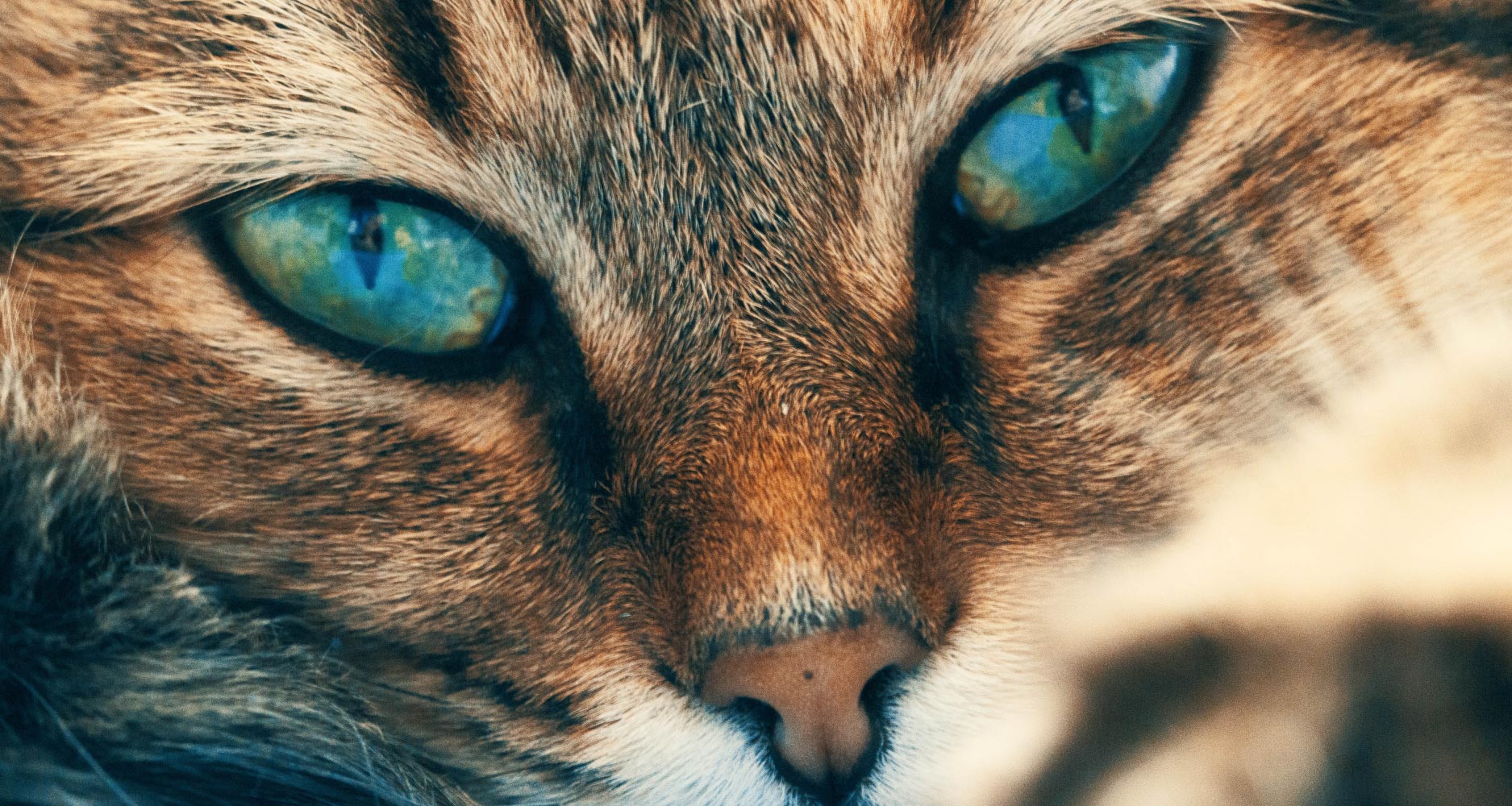HEALTH & WELLNESS

TRENDING

SIGN UP and Start Receiving
Our Monthly Newsletter,
The Chronicles
Facts About Your Cat’s Eyes

Cats are weird, wonderful and rumoured to be wise… especially when you look in their eyes! But, how do they actually view the world around them? Well, science has come up with a few generally agreed upon facts to help us understand this interesting feline organ.
But, before we jump into feline eye facts, let’s take a look at eye anatomy first:
- Light enters the eye through a lens.
- Behind the lens of each eye there is a pupil (essentially a gateway to the retina).
- The retina sits at the back of the eye.
- Via the optic nerve, the retina transports images and light to the brain.
- The brain turns all this information into a visual we can understand.
- The retina has two types of receptors: ones that detect light (called rods)
and ones that detect colour (called cones).
LOW LIGHT YES, PITCH-BLACK DARK NO
Somewhere along the line, many of us have heard that cats can see in total darkness. Unfortunately for them, this is not true. They do however only need one-sixth of the light we need to function. How is this possible?
Reason number one: they have more rods (receptors that detect light).
Reason number two: a certain tissue located at the back of the eyes allows light to reflect within the eye, enhancing sight. This same tissue is responsible for the slightly sinister shine that’s visible when we spot a cat in the dark
LIMITED ‘RAINBOW’ VISION
Distinguishing a variety of colours is not one of their strengths, however, they’re not totally colour blind. Compared to humans, they have fewer cones (receptors that detect colour) and these cones are less concentrated as well. Apart from not experiencing the intensity of hues, scientists reckon that greens and reds can’t be distinguished, while yellows and blues are clearer.
THE DEVIL IS NOT IN THE DETAIL
Although cats are not able to visualise the same amount of detail humans do, they’re not nearsighted (that is, they don’t have a vision problem related to lens shape defects). Instead, the amount of detail is affected by how the rods and cones work together. Compared to humans, objects such as leaves and text on a page are perceived differently. The fact that a cat’s lens shape remains unchanged in terms of close-up focus have many researchers convinced that cats are farsighted, with optimal vision up to 90 cm.
THE VALUE OF VERTICAL PUPILS
Pupils shaped like vertical slits are found in animals that are both diurnal and nocturnal.
The reason: This shape is able to facilitate faster pupil change. The reduced pupil size is also less affected by sudden light level changes as less light enters the lens.
Related Articles













